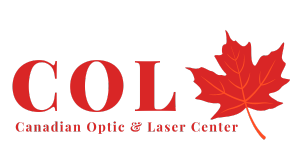There are numerous Career opportunities for Laser Technicians with Smoking Cessation certification. Graduates can offer mobile services and deliver smoke cessation therapy in various companies to employees that are smokers and wish to quit.
This laser service is considered a non-medical procedure and many companies have implemented a smoke cessation plan for their employees throughout North America, Europe and Asia. The Canadian government has initiated several programs to try to lower rates of smoking in Canada, and one of them is to provide programs to support those who choose to quit smoking. Laser Therapy in smoke cessation will help smokers quit easier . Companies that apply and pay for this program for their employees can use the cost as deductible for their taxes. Based on the above information, students would have a very high chance of furthering their careers in this field and opening Smoke Cessation Clinics that in some cases can be funded by the government. Additionally, this therapy can be an additional service offered in any type of wellness center or clinic.
This course contains reviews the science of lasers, the mechanisms of Low Level Laser Therapy (LLLT), tobacco addiction, smoking epidemiology, smoking side effects, The pros and cons of smoking and quitting, stages of smoking, pharmacologic tools, non-pharmacologic cessation tools, dealing with relapse, laser methods, indications and contraindications, client consultation pre and post laser therapy. The students will go through hands-on training with qualified instructors, and will obtain the benefits of learning with numerous principles, technical laser procedures for smoking cessation to progress their theoretical and experimental learning knowledge.
Ask A Question Here:
Course Topics Include:
- Treatment protocols and guidelines for ear acupuncture to control addiction to nicotine based on The National Acupuncture Detoxification Association.
- Treatment protocols and guidelines for ear acupuncture to control addiction to food.
- Recommended nutritional support.
- Intravenous laser therapy for detoxification.
- Protocols for pain management.
Some Facts
Auricular acupuncture protocol is used around the world to help people deal with and recover from substance abuse. The National Acupuncture Detoxification Association NADA protocol has been shown in a variety of clinical settings to be beneficial in the process of detoxification from substance abuse as well as to help with the emotional, physical and psychological attributes involved in addictions. The detoxification protocols, in contrast with much of Chinese medicine, involve no diagnosis and are usually not modified in any way.
In Canada, the societal costs attributable to smoking for 1993 were approximately $11 billion, of which $3 billion were spent on direct health care costs such as hospitalization and physician time. The remaining $8 billion was due to lost productivity. In comparison, it is estimated that in 1993/94, revenue from taxes on cigarettes totalled $2.6 billion. In 2010, 20.8% of Canadians aged 12 and over — about six million people — were smokers. The medical evidence on the effects of smoking is both comprehensive and compelling. Health Canada estimates that 21% of all deaths in Canada can be attributed to smoking. But what are the costs to the employer?

Source: The Conference Board of Canada.
“Paying for an employee’s tobacco cessation treatment provides more return on investment than any other adult treatment or prevention benefit.”
